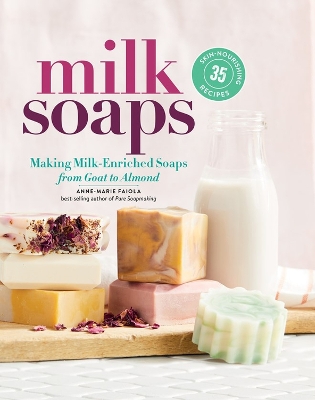Reviewed by annieb123 on
Milk Soaps is a tutorial guide to making and using milk-enriched soaps of high quality for the hobbyist soapmaker. Due out 30th April 2019 from Storey, it's 272 pages and available in flexibound and ebook formats.
Soapmaking has become a very popular hobby in the last years. There are a myriad of books available with every possible recipe and additive. A recent search of Amazon kicked up some booklets and a few single-use recipes for milk soaps, but very little info specifically aimed at using milks (both plant and animal based) to create soap. This is a complete treatment of the subject gathered into one hefty volume.
It begins with an introduction of the ideas and science behind saponification. The introductory chapter and tools and ingredients section covers about 19% of the page content. The author also includes a good subchapter on safety including proper storage of lye and other ingredients. The introduction is followed by 35 specific recipes arranged roughly in order of the level of complexity. All of the ingredients called for in the book are easily sourced with an internet search, with one exception. The author does talk about the possibility of using human breast milk for soapmaking (though it's not listed in one of the 35 specific recipes). I wish I'd had this book after my youngest weaned herself; I wound up throwing away a fair bit of milk myself.
The book is well and clearly photographed and the tutorials are full of good step-by-step photos which the reader shouldn't have any troubles following.
The book ends with a short glossary, a resource list with links aimed at readers in North America (though ingredients are available anywhere worldwide on the internet), a troubleshooting FAQ, and an index (missing from the e-ARC, but to be included in the final copy).
Storey has a long history of well researched and presented titles for practical living skills and self sufficiency. This book is a worthy addition.
Five stars. This is a complete tutorial guide with really yummy recipes.
Disclosure: I received an ARC at no cost from the author/publisher for review purposes.
Reading updates
- Started reading
- Finished reading
- 20 April, 2019: Reviewed
